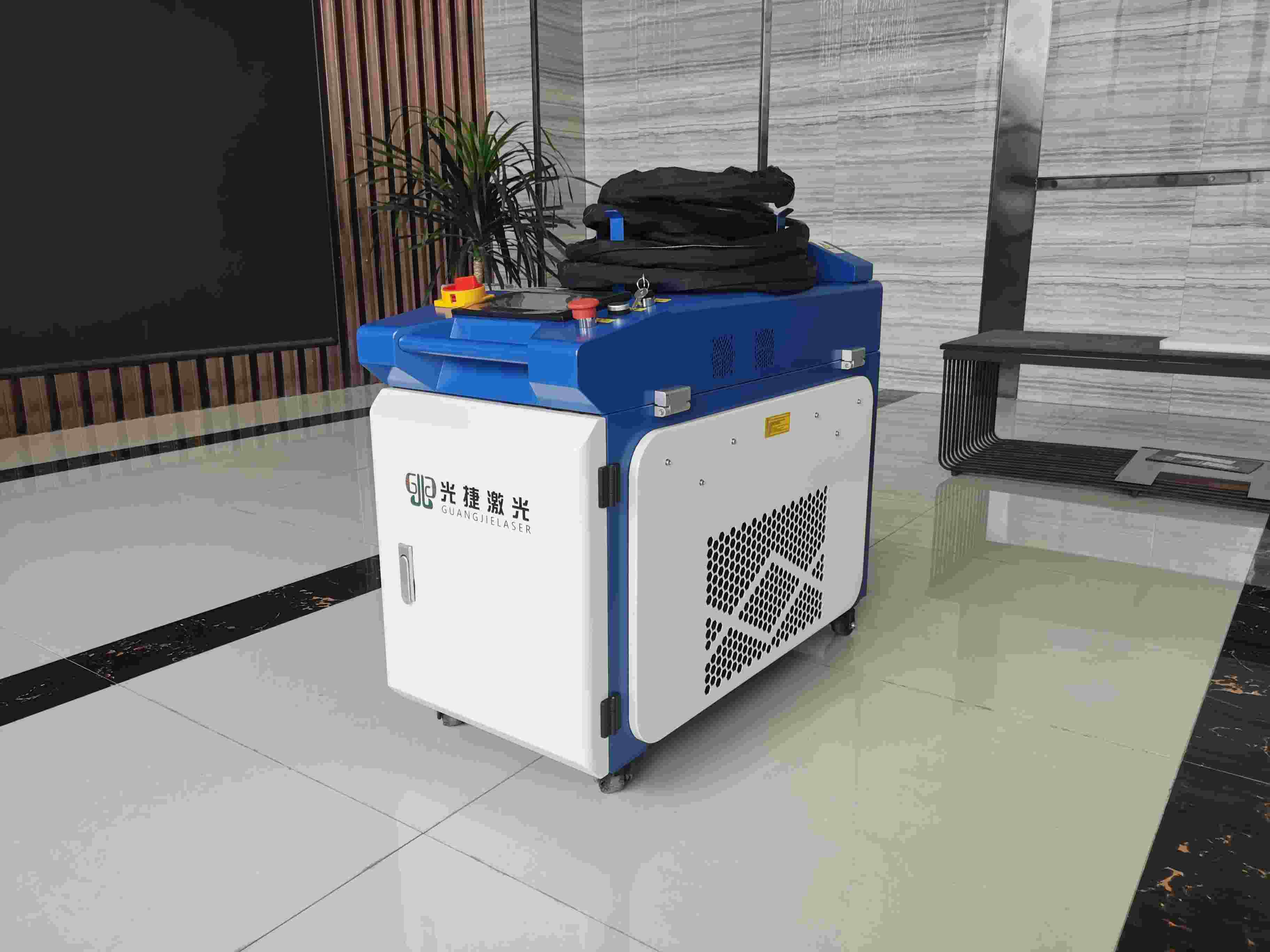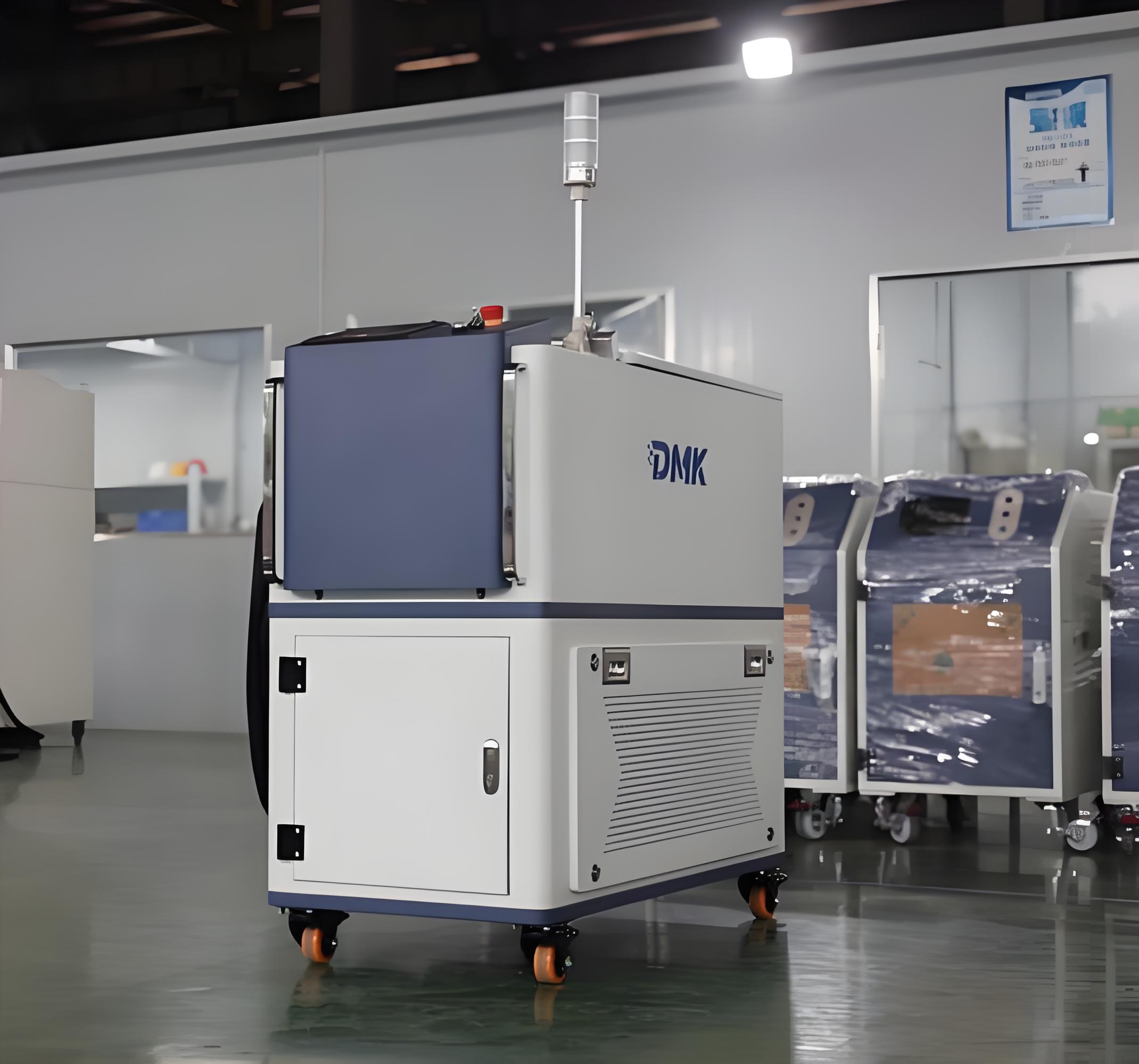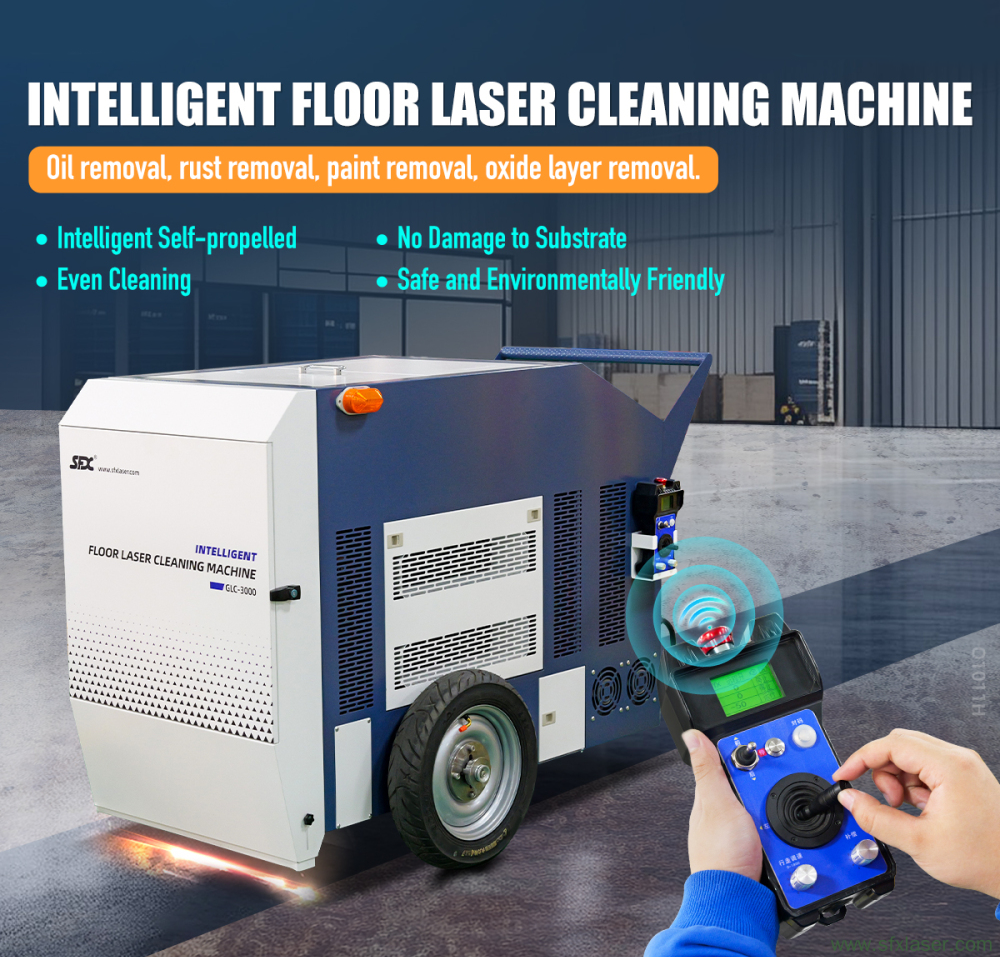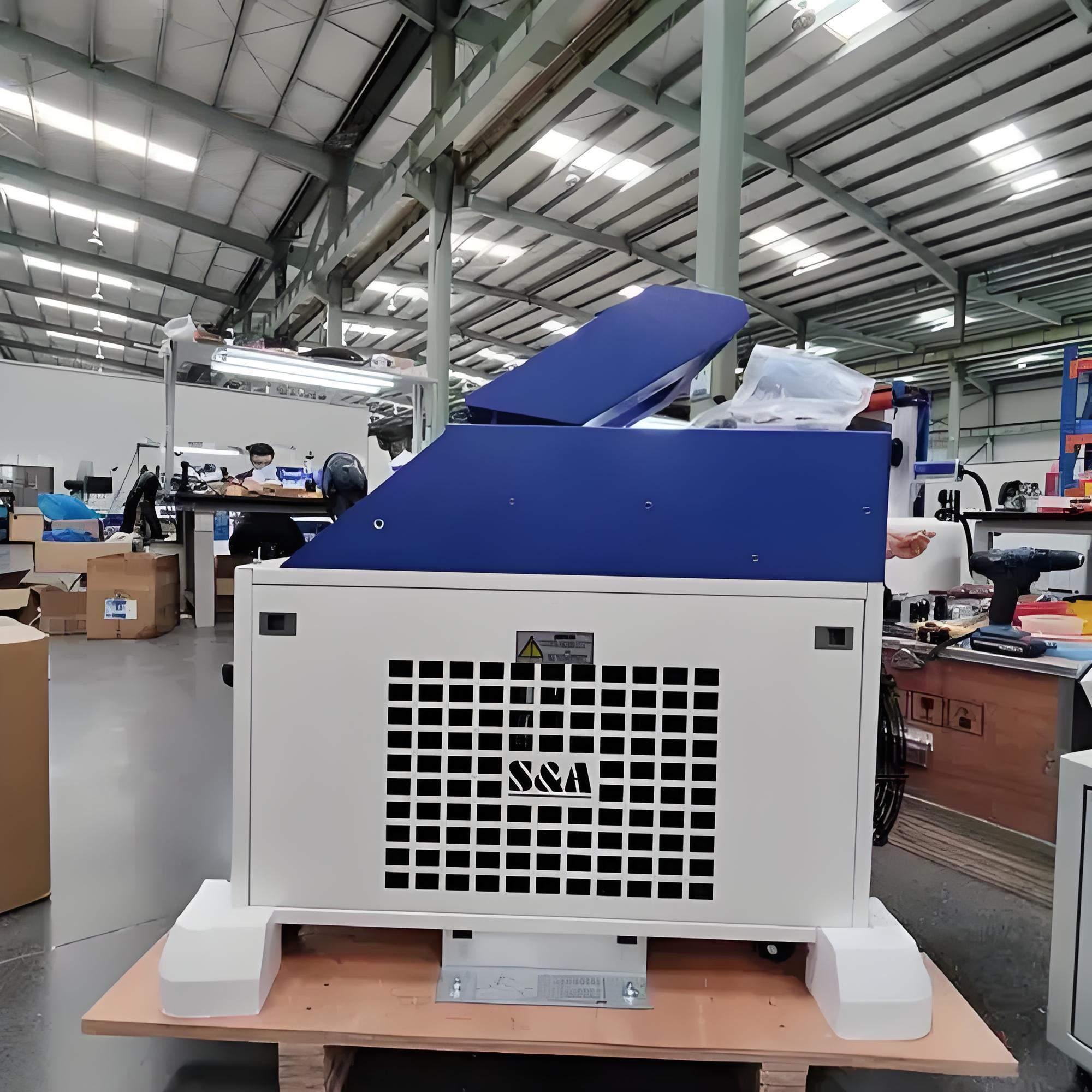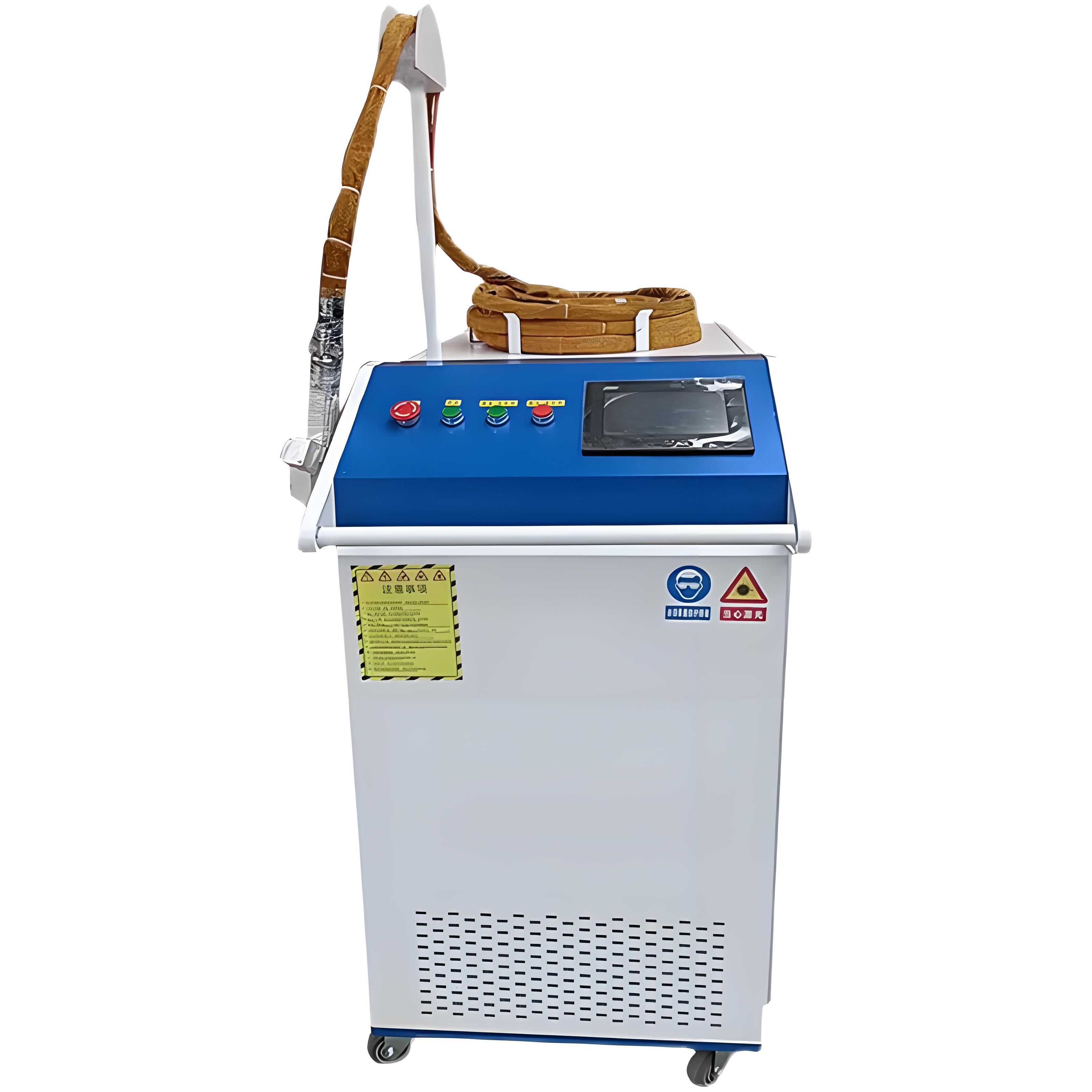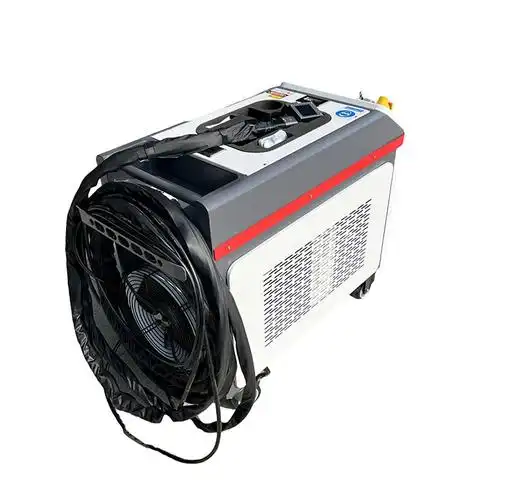As someone who’s been in the industrial maintenance and surface treatment industry for over a decade, I’ve witnessed countless innovations come and go. But few have made as big an impact as laser rust removal. When I first saw a laser system strip rust off a steel beam with surgical precision, I knew this technology was a game-changer. Today, when people ask me why laser rust removal has become so critical, I point to its efficiency, environmental benefits, and versatility. In this article, I’ll share my insights from years of working with this technology, explaining why it’s become indispensable in industries ranging from manufacturing to heritage preservation, and how it addresses real-world challenges better than traditional methods.
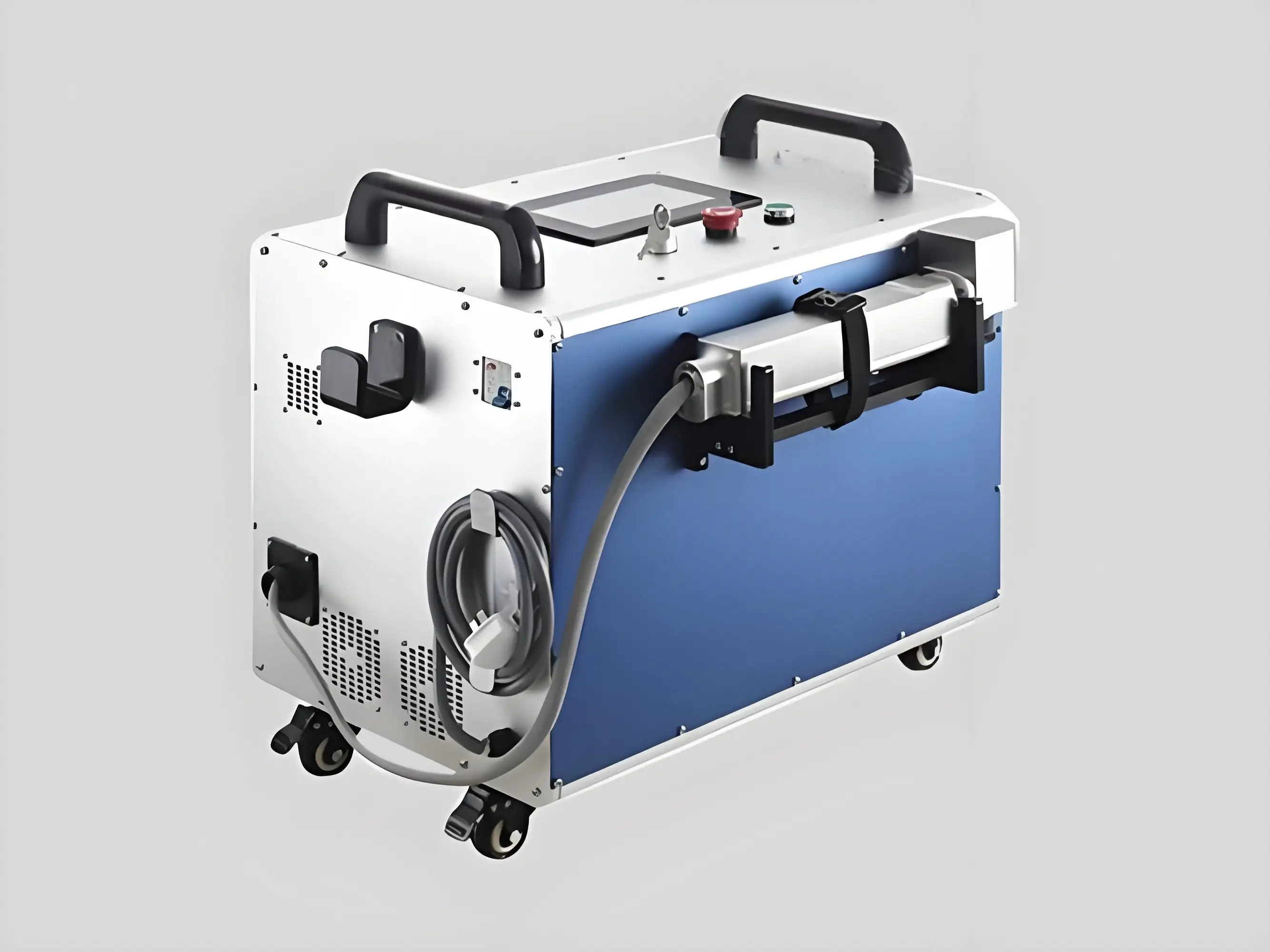
What Is Laser Rust Removal, and How Does It Work?
Let’s start with the basics. Laser rust removal uses high-intensity laser beams to vaporize rust (iron oxide) and other contaminants from metal surfaces. The laser’s energy is absorbed by the rust, causing it to heat up and evaporate or turn into dust, while leaving the underlying metal largely untouched. This process, often called laser ablation, is controlled with precision, allowing operators to remove rust without damaging the substrate.
I remember my first hands-on experience with a laser system in a shipyard. The machine hummed quietly as it stripped decades of rust from a hull, revealing clean steel underneath. Unlike the noisy, messy sandblasting I was used to, this was clean and precise. The technology relies on parameters like laser power (typically 20W to 1000W), pulse frequency, and beam focus, which can be adjusted for different materials and rust levels. This flexibility is part of why it’s so valuable today.
Why Has Laser Rust Removal Become So Important?
Rust has always been the enemy of metal, eating away at infrastructure, machinery, and artifacts. Traditional rust removal methods—like sandblasting, chemical stripping, or wire brushing—have been around for ages, but they come with serious drawbacks. Laser rust removal addresses these issues head-on, and its importance stems from several key advantages. Here’s why it’s become a cornerstone in modern industry, based on my observations.
1. Environmental Sustainability
In my years working with industrial clients, I’ve seen growing pressure to adopt eco-friendly practices. Traditional rust removal methods are often messy and wasteful. Sandblasting generates tons of abrasive waste, while chemical strippers produce hazardous runoff that’s tough to dispose of safely. Laser rust removal, by contrast, is a green technology.
No Consumables: Lasers don’t require abrasive materials like sand or chemicals. The only byproduct is rust dust, which can be vacuumed up easily.
Minimal Waste: Unlike sandblasting, which can leave behind mountains of spent media, laser systems produce negligible waste.
Lower Energy Use: While lasers do consume electricity, their precision means less overall energy compared to running heavy compressors or chemical processing plants.
I once worked with a factory that switched to laser rust removal to meet stricter environmental regulations. They not only avoided hefty fines but also improved their public image as a sustainable operation. With governments and industries pushing for net-zero goals, this eco-friendly approach is a major reason laser rust removal is critical today.

2. Precision and Non-Destructive Cleaning
One of the most impressive things about laser rust removal is its precision. In industries like aerospace or automotive manufacturing, where components must meet exacting standards, damaging the base material during rust removal is not an option. Lasers can be fine-tuned to remove only the rust layer, preserving the metal’s integrity.
I recall a project restoring a vintage aircraft for a museum. The aluminum airframe had patches of corrosion, but abrasive methods would’ve ruined its delicate surface. The laser system we used stripped the corrosion without scratching the metal, saving months of rework. This non-destructive quality makes laser rust removal essential for:
Delicate Surfaces: Think of thin steel sheets, aluminum alloys, or historical artifacts.
Complex Geometries: Lasers can reach intricate shapes, like engine parts or sculptures, where manual methods struggle.
Surface Preparation: Lasers leave a clean, uniform surface ideal for welding, coating, or painting.
3. Worker Safety and Health
Having spent years in industrial settings, I’ve seen how traditional rust removal can take a toll on workers. Sandblasting kicks up dust clouds that require heavy protective gear, while chemical strippers expose operators to toxic fumes. Laser rust removal is a safer alternative.
No Hazardous Chemicals: Operators avoid exposure to caustic substances.
Reduced Dust: While some rust dust is produced, it’s minimal compared to sandblasting and can be controlled with proper ventilation.
Lower Noise Levels: Lasers are quieter than abrasive blasting, reducing the risk of hearing damage.
I once trained a team on a laser system for a steel fabrication plant. The workers were thrilled to ditch their bulky respirators and work in a cleaner environment. This focus on safety is driving industries to adopt laser technology, especially as workplace regulations tighten.
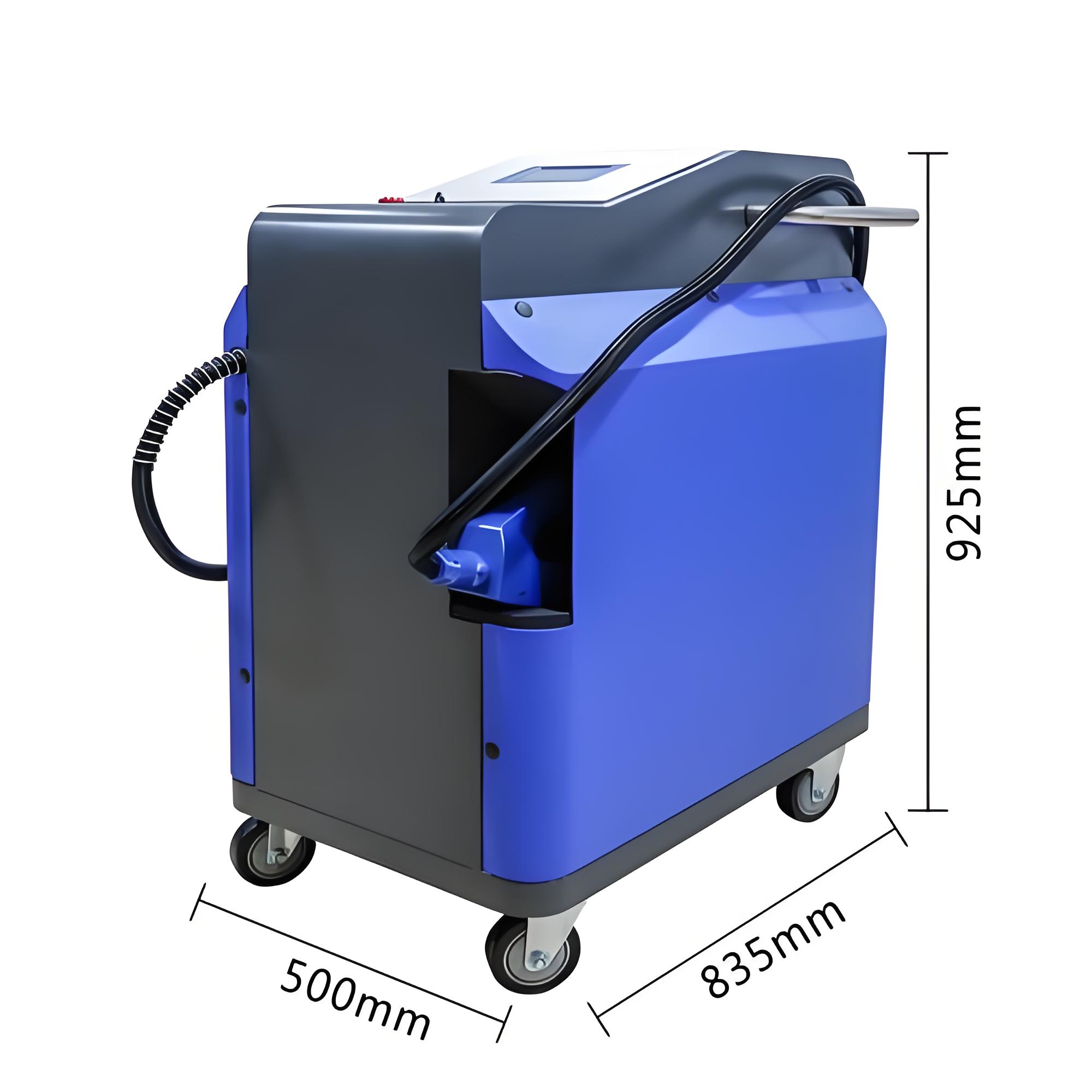
4. Cost-Effectiveness Over Time
At first glance, laser rust removal systems seem expensive—prices range from $10,000 for portable units to over $100,000 for industrial-grade machines. But in my experience helping clients evaluate equipment, the long-term savings are significant.
Lower Operating Costs: No need for abrasives, chemicals, or frequent tool replacements.
Faster Processing: Lasers work quickly, reducing labor hours. I’ve seen laser systems clean large surfaces in half the time of sandblasting.
Less Downtime: The precision and cleanliness mean less setup and cleanup, keeping operations running smoothly.
A shipyard I consulted for invested in a high-power laser system. Within two years, they recouped the cost through savings on labor, waste disposal, and consumables. For industries with high rust removal demands, this makes laser technology a smart financial move.
5. Versatility Across Industries
Laser rust removal’s importance also lies in its versatility. I’ve used it in settings as diverse as oil rigs, museums, and automotive plants. Its applications include:
Marine Industry: Removing rust from ship hulls and offshore platforms without damaging anti-corrosion coatings.
Manufacturing: Cleaning molds, tools, and machinery parts to extend their lifespan.
Heritage Preservation: Restoring artifacts, sculptures, and historical structures without altering their patina.
Infrastructure: Maintaining bridges, pipelines, and rail systems where rust threatens structural integrity.
This adaptability is why laser rust removal is gaining traction across sectors. It’s not just a tool—it’s a solution tailored to modern challenges.
Comparing Laser Rust Removal to Traditional Methods
To give you a clearer picture, I’ve put together a table comparing laser rust removal to traditional methods, based on my experience in the field:
|
Method |
Environmental Impact |
Precision |
Worker Safety |
Cost (Long-Term) |
|---|---|---|---|---|
|
Laser Rust Removal |
Low (minimal waste) |
High (non-destructive) |
High (no chemicals) |
Low (saves on consumables) |
|
Sandblasting |
High (abrasive waste) |
Low (can damage surface) |
Low (dust, noise) |
High (media, disposal) |
|
Chemical Stripping |
High (hazardous waste) |
Moderate (risk of residue) |
Low (toxic fumes) |
Moderate (chemical costs) |
|
Wire Brushing |
Low (manual waste) |
Low (scratches surface) |
Moderate (physical strain) |
High (labor-intensive) |
This table shows why laser rust removal stands out. It’s not perfect—initial costs are high, and it requires trained operators—but the benefits are hard to ignore.
Real-World Applications: Stories from the Field
To illustrate why laser rust removal matters, let me share a couple of stories from my career.
In one case, I worked with a refinery that struggled with rust on their pipelines. Sandblasting was too messy and risked damaging the pipes’ protective coatings. We brought in a 500W laser system, which cleaned the rust in days without disrupting operations. The client was amazed at how little cleanup was needed, and the pipes were ready for recoating immediately.
Another project involved a historic iron bridge in a small town. The local government wanted to preserve its original look, but rust was eating away at the structure. Traditional methods would’ve stripped the bridge’s character, but a low-power laser system removed the rust while keeping the patina intact. The community was thrilled, and the bridge became a point of pride again.
These experiences show how laser rust removal solves practical problems in ways other methods can’t match.
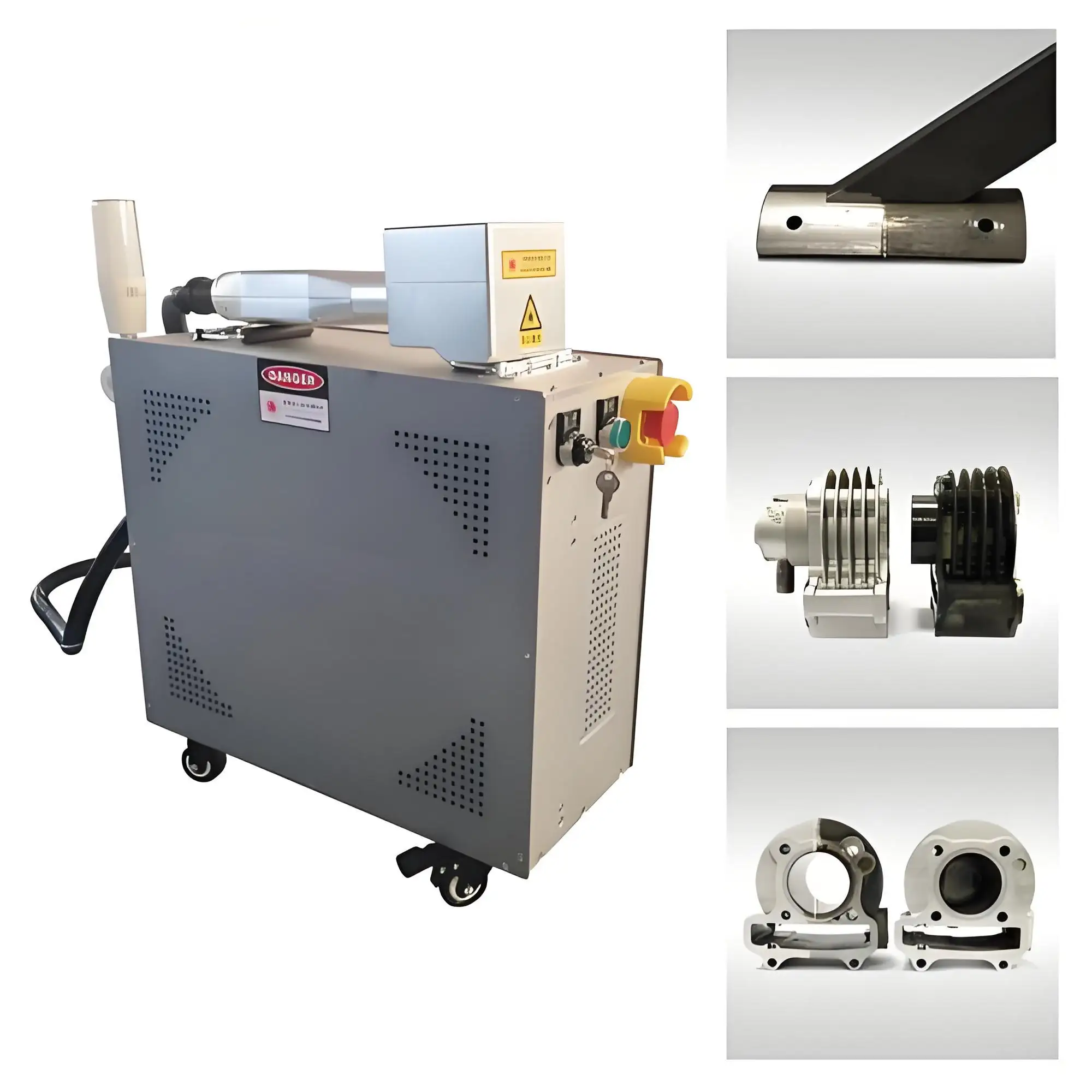
Challenges and Limitations
I’d be remiss if I didn’t mention some challenges. Laser rust removal isn’t a magic bullet, and I’ve seen projects where it wasn’t the best fit:
High Initial Cost: Smaller businesses may hesitate to invest in a laser system, though rental options are increasingly available.
Training Required: Operators need training to adjust laser parameters and ensure safety. I’ve seen mistakes like incorrect settings damage surfaces.
Not for All Materials: Lasers work best on metals but may not suit plastics or composites, where other methods might be better.
Despite these hurdles, the technology’s benefits outweigh the drawbacks for most applications, especially as costs come down and training becomes more accessible.
The Future of Laser Rust Removal
Looking ahead, I’m excited about where this technology is headed. Advances in portable laser systems are making it easier for small workshops to adopt the tech. I’ve also seen prototypes of automated laser systems that use AI to adjust parameters in real-time, boosting efficiency. As industries face stricter environmental and safety regulations, laser rust removal is poised to become the standard, not the exception.
Why I Champion Laser Rust Removal
After years of working with rust removal technologies, I can say with confidence that laser systems are transforming how we maintain and preserve metal assets. They’re cleaner, safer, and more precise than traditional methods, addressing the needs of modern industries while aligning with global sustainability goals. Whether you’re running a factory, restoring a monument, or maintaining a fleet of ships, laser rust removal offers a solution that’s hard to beat.
If you’re considering adopting this technology, start by evaluating your needs—budget, application scale, and material types—and consult with a reputable supplier. It’s an investment, but one that pays dividends in efficiency, safety, and environmental impact.
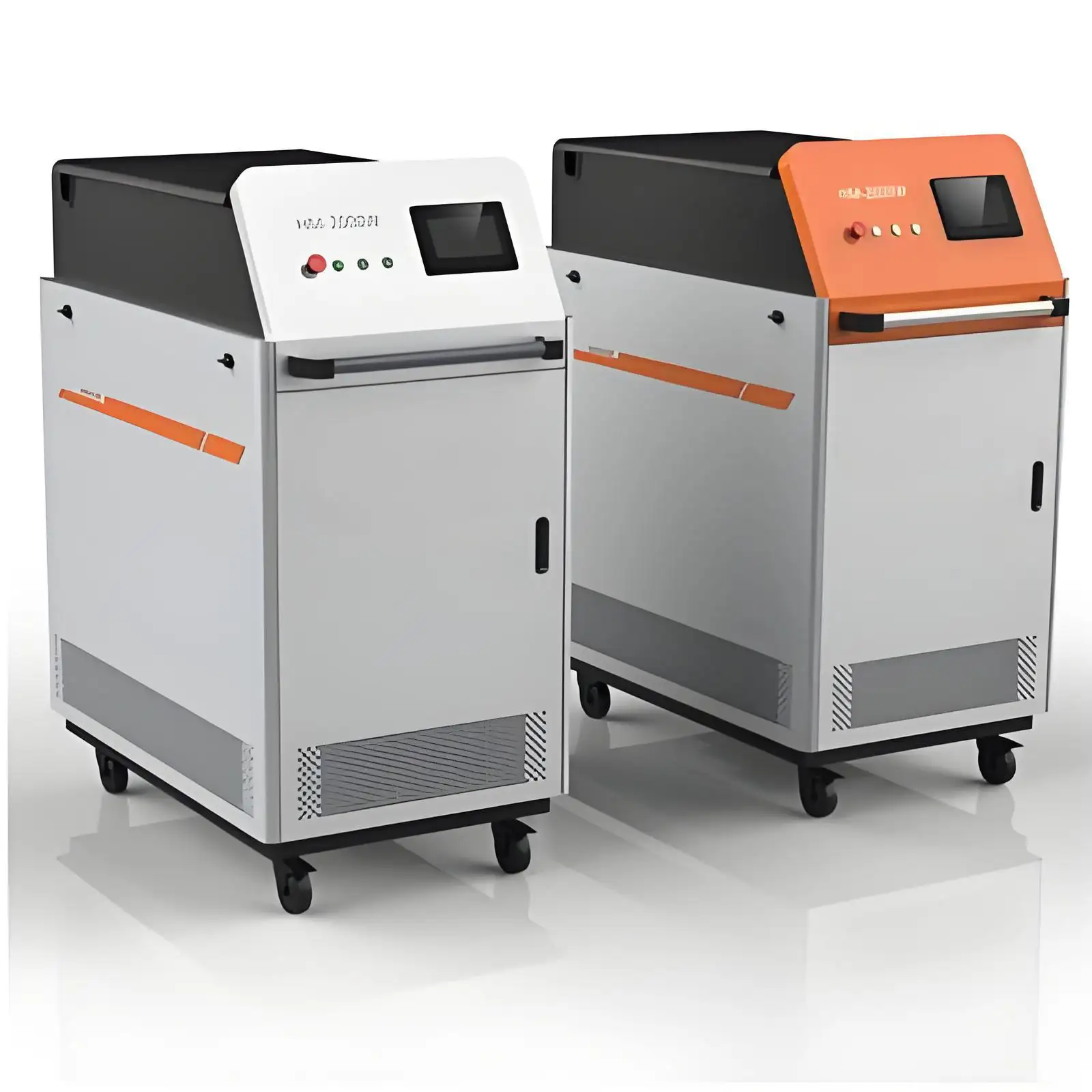
Related Questions and Answers
Here are some questions I’ve heard from clients and colleagues, along with my answers:
Q: Is laser rust removal safe for all types of metal?
A: Generally, yes, but it depends on the metal’s thickness and composition. Thin or highly reflective metals like copper may require lower power settings to avoid damage. Always test on a small area first.
Q: How long does a laser rust removal machine last?
A: With proper maintenance, a quality laser system can last 10–15 years. I’ve seen units in heavy use still perform well after a decade.
Q: Can laser rust removal be done in hazardous environments, like oil rigs?
A: Yes, but it requires specialized equipment rated for explosive atmospheres. I’ve worked on offshore projects where intrinsically safe lasers were used successfully.
Q: Is it worth renting a laser system instead of buying one?
A: For one-off projects or small businesses, renting is a great option. It lets you test the technology without the upfront cost. Just ensure the rental includes training.
If you’re curious about laser rust removal or need help integrating it into your operations, feel free to reach out. I’m always happy to share what I’ve learned from years in the industry!

